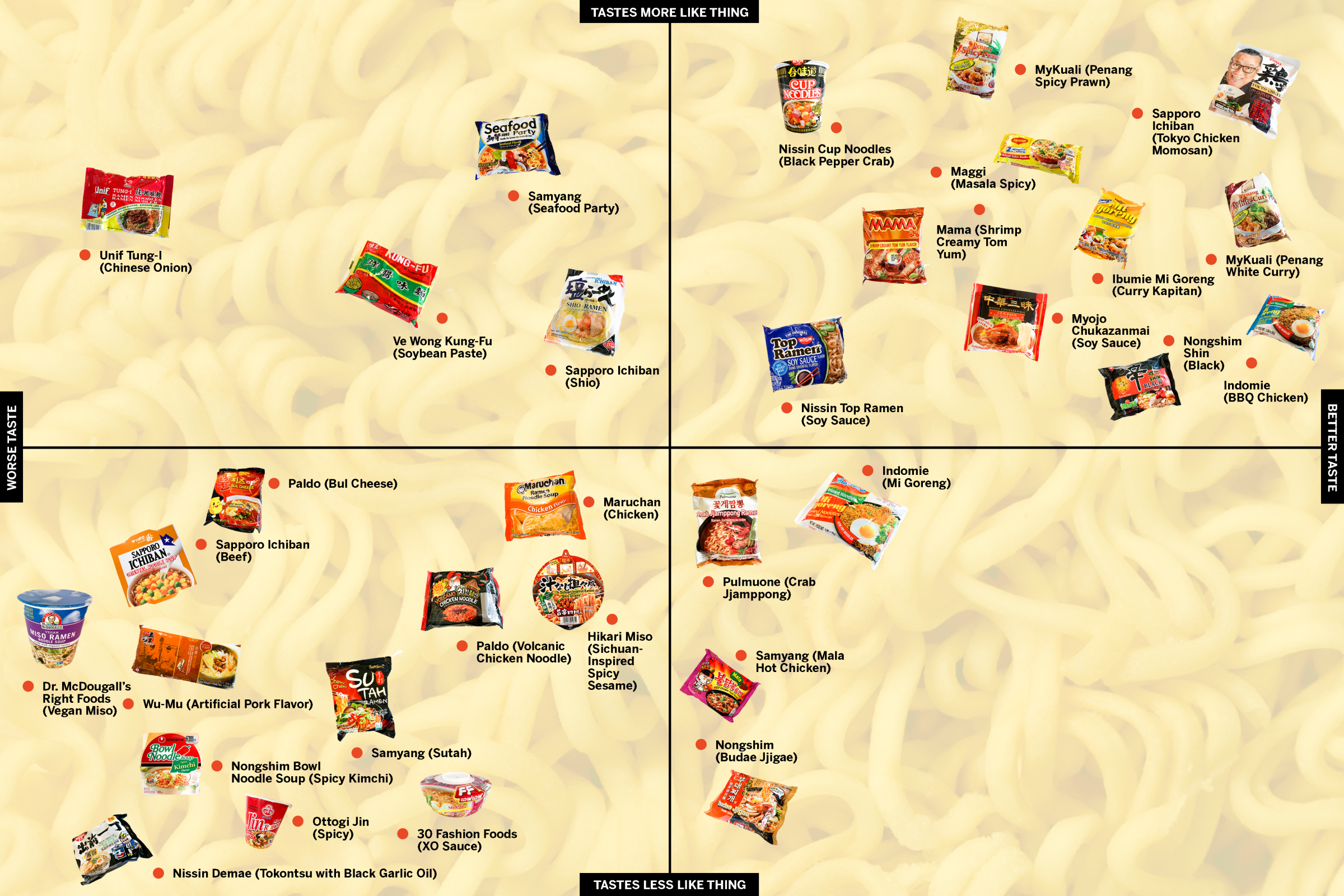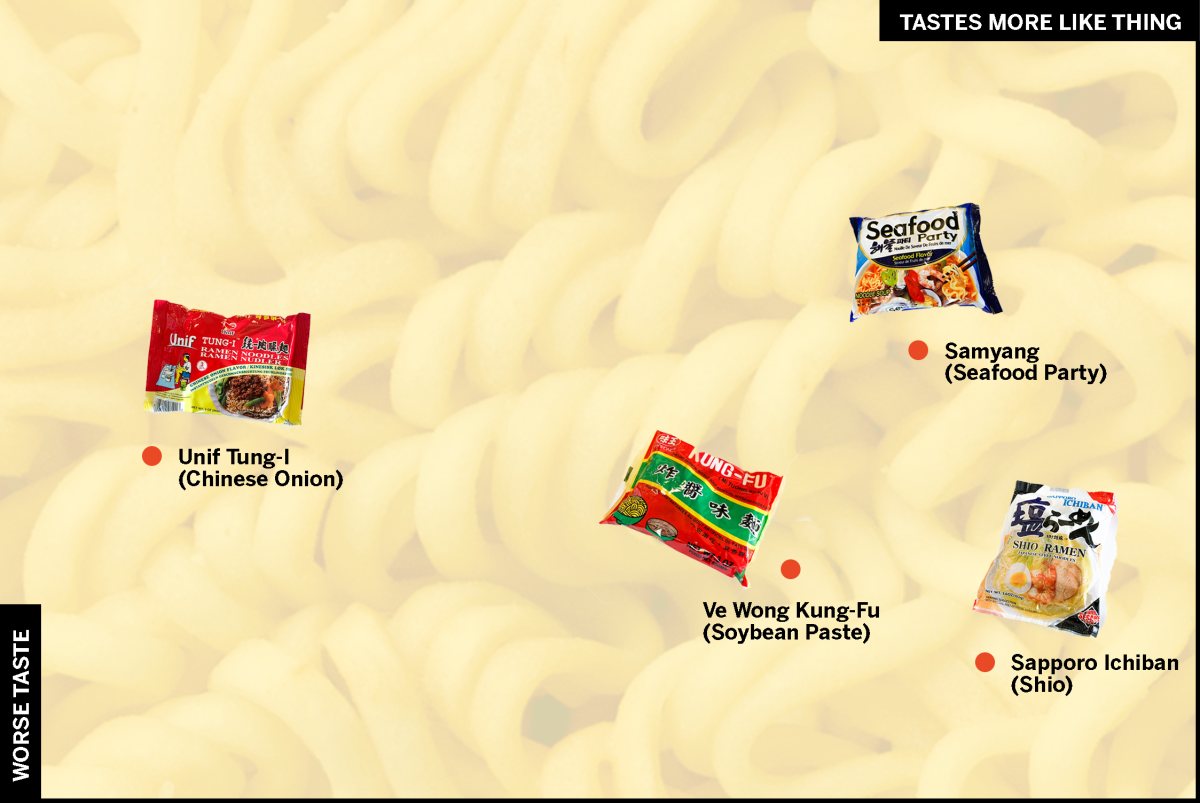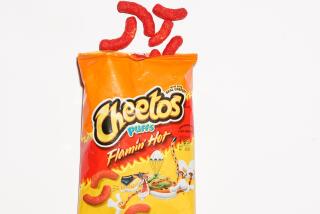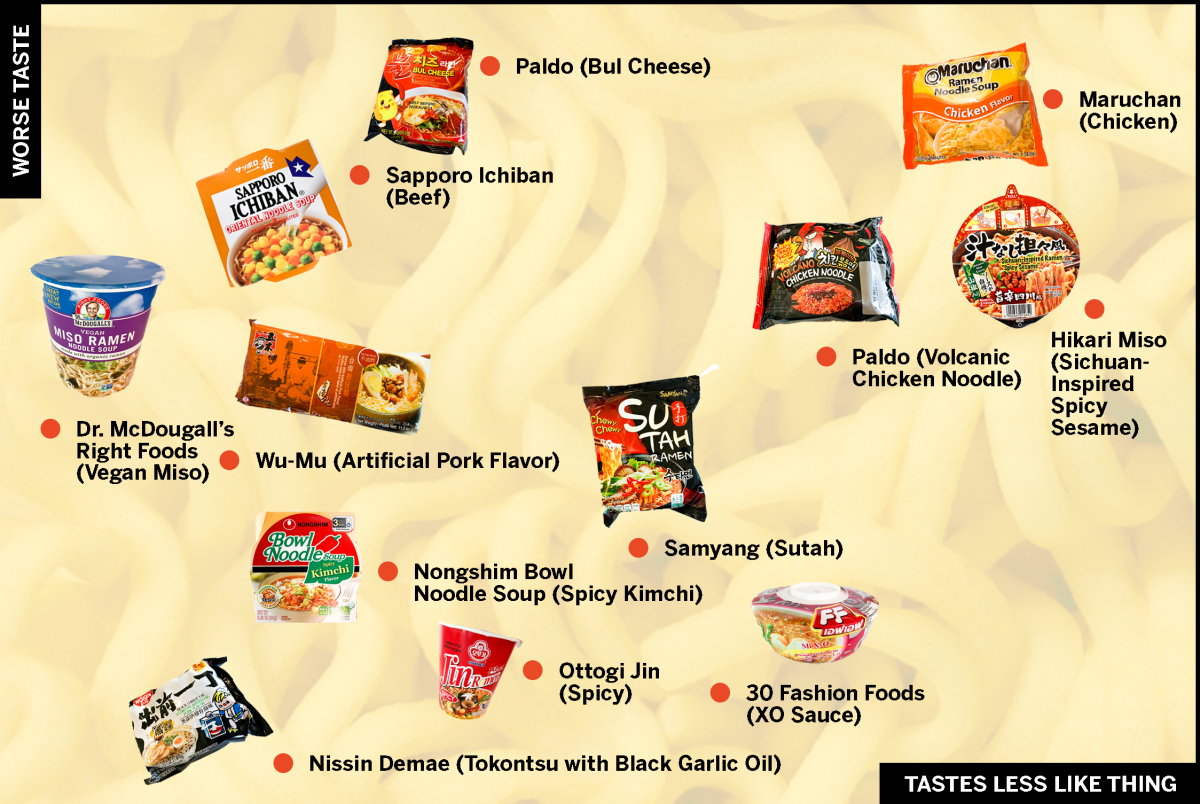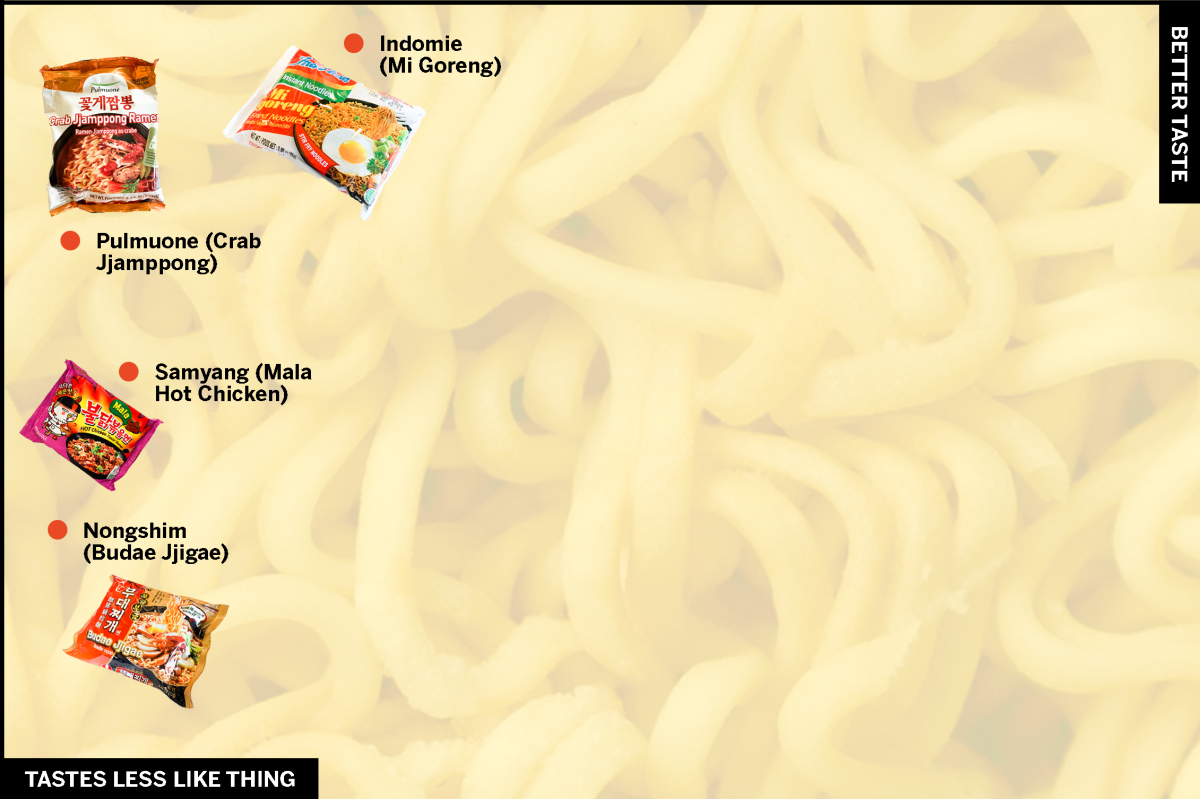Hello friends, and welcome. Thank you for watching our new online series, “Off Menu” (you’ve been watching, right?) and subscribing to our brand-new baby bird YouTube channel. I don’t have anything new to say about the terrible things happening in our country right now, so let’s get right to it, shall we?
I am happy — elated, even — to present to you the totally inarguable, airtight and utterly incontrovertible L.A. Times Instant Ramen Power Rankings. For the purposes of this rankings, I have eaten every variety of ramen in the known universe [Author’s note: I have not done this] and have come up with an infallible ratings system to rank the 31 types listed below. I could not, obviously, include all ramens in this piece. But I endeavored to cover a broad swath of the noodle spectrum and keep it to no more than three (3) varieties per brand.
I’ve ranked the ramens based on two metrics: taste and something I call Truth in Advertising, or T.I.A. Does it taste like the thing it purports to taste like? Does the shrimp ramen taste like shrimp? Does the chicken taste like chicken? For this rankings, I have suffered and my extremities have swelled; my blood pressure has approximately trebled. But I do this for you, dear reader. And for capital-J Journalism.
